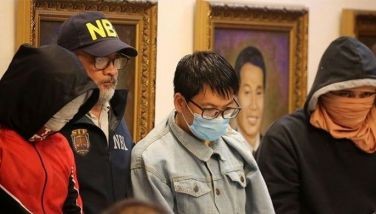Where exactly does Valley fault pass?
MANILA, Philippines - Should a magnitude 7.2 earthquake hit Metro Manila, high end subdivisions located along the Marikina Valley Fault could be severely damaged.
The Marikina fault line, also known as the West Valley Fault, starts from the Sierra Madre and runs through Bulacan, Rodriguez, Rizal, Quezon City, the eastern side of Metro Manila including Pasig, Taguig, Muntinlupa, San Pedro, and Sta. Rosa in Laguna and ends in Carmona, Cavite.
According to the website www.nababaha.com, the Marikina Valley Fault passes through Valle Verde, Greenmeadows, and Blue Ridge subdivisions.
Officials of the Philippine Institute of Volcanology and Seismology (Phivolcs) said the fault, which is capable of causing a magnitude 7.2 quake, “is ripe for another major movement.”
Phivolcs deputy administrator Bartolome Bautista earlier said the Marikina Valley fault moves every 200 and 400 years. The last major movement occurred 200 years ago.
The Luzon earthquake which occurred on July 16, 1990 produced a 125 km-long ground rupture that stretched from Dingalan, Aurora to Cuyapo, Nueva Ecija as a result of strike-slip movements along the Philippine Fault and the Digdig Fault within the Philippine Fault System. Infrastructure on top of the rupture was completely destroyed.
There were calls to declare the Marikina Valley Fault a danger zone.
Phivolcs director Renato Solidum clarified that White Plains subdivision is not located along the fault.
He said if a powerful quake happens in Metro Manila, the nearby provinces of Rizal, Bulacan and Cavite will also be affected.
“We don’t want people to have the impression that only those living near the fault are in danger, everybody should prepare for a major earthquake,” Solidum told The STAR.
He said that because of this, housing and building developers are required by the Department of Environment and Natural Resources to secure a permit from Phivolcs before starting construction.
Phivolcs has set up a five-meter buffer zone on both sides of the fault line to guide property developers in their construction projects.
Solidum also urged the public to strictly comply with the National Building Code of the Philippines.
“We should build houses, buildings that could withstand strong ground shaking,” he said.
Solidum said aside from ground rupture and ground shaking, a strong earthquake could also cause liquefaction, the loosening of soil after an earthquake.
Liquefaction is defined as the process by which sediment that is very wet starts to behave like a liquid. Liquefaction occurs because of the increased pore pressure and reduced effective stress between solid particles generated by the presence of liquid. It is often caused by severe shaking, especially that associated with earthquakes.
Coastal areas in the cities of Marikina, Pasig, Taguig, Caloocan, Malabon, Navotas, Marikina, Muntinlupa, Pasay, Las Piñas and the municipality of Pateros are prone to liquefaction.
Aside from Metro Manila several areas in the provinces of Pampanga and Nueva Ecija are also susceptible to liquefaction.
- Latest
- Trending



























